
Explore the seven most beautiful airports in the world, recognized by the 2025 Prix Versailles awards for their architectural excellence.
Modern airports now emphasize creative architecture, combining design, comfort, and sustainability beyond the basic travel.
World’s Most Beautiful International Airports
The Prix Versailles awards have announced the most beautiful airports in the world for 2025, showcasing unique innovation and illustrations in design.
Presented by UNESCO and the International Union of Architects, leading the rank is China’s Yantai Penglai International Airport Terminal 2.
Here are the world’s most beautiful architecturally designed airports that have made it to the top 10 list.
1. Yantai Penglai International Airport Terminal 2, China
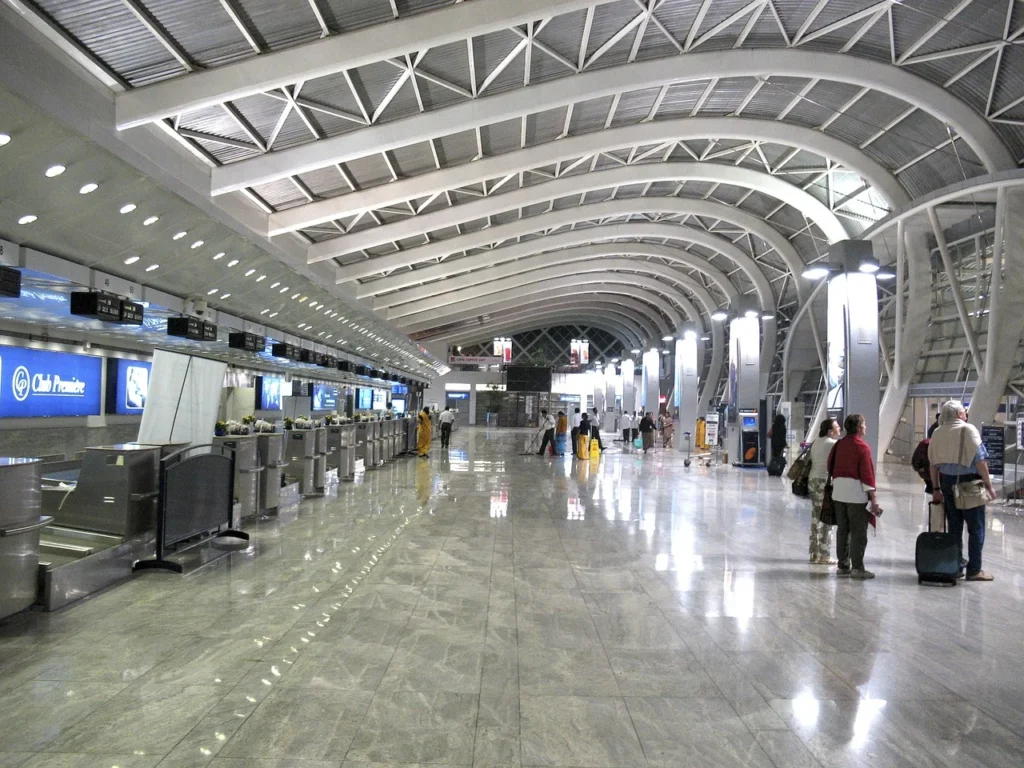 Photo: Yakshup / Pixabay
Photo: Yakshup / PixabaySpanning across 167,000 square meters, the airport tops the list of the most beautiful airports in the world. Designed by Aedas along with CSWADI and the Shanghai New Era Airport Design, the inspiration for the design comes from its coastal position.
The airport’s wobbling roof was inspired by the ever-shifting Kunyu Mountain. The skylights, interspersed across the building, are designed to guide passengers to their respective departure gates.
At the terminal’s pinnacle, a glazed dome is placed above a multi-storey atrium. This allows natural light to fill the entire airport.
2. Marseille Provence Airport Terminal 1, France
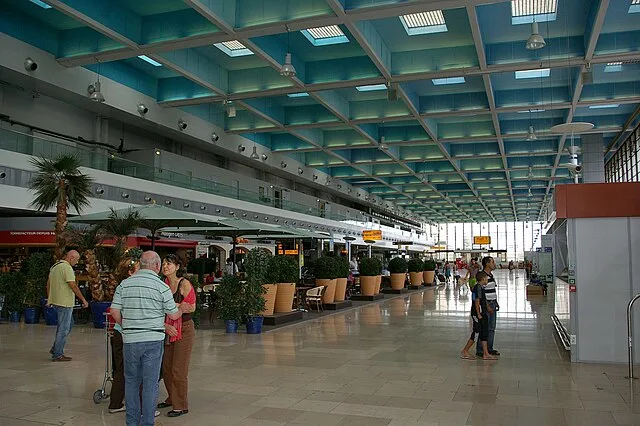 Photo: Ketounette / Wikimedia
Photo: Ketounette / WikimediaMarseille’s Provence Airport Terminal 1 has undergone a unique transformation, celebrating modern design and a deep-rooted French cultural significance. Spread across around 20,000 square meters, the terminal is ranked second in the most beautiful architectural airport.
The terminal boasts an inverted beam roof and a 22-meter-long, recycled metal-made window-framed hall. A 72-foot-long ceiling soared a grid of aluminum skylights to promote natural ventilation.
The airport’s design is heavily inspired by the maritime character of Marseilles, featuring timber canopies and wooden facades- a reminiscence of the boat house in the Old Port. The centerpiece is a new eye-catcher with a vast hall, bridging between the old terminals.
3. Roland Garros Airport Arrivals Terminal, Reunion Islands
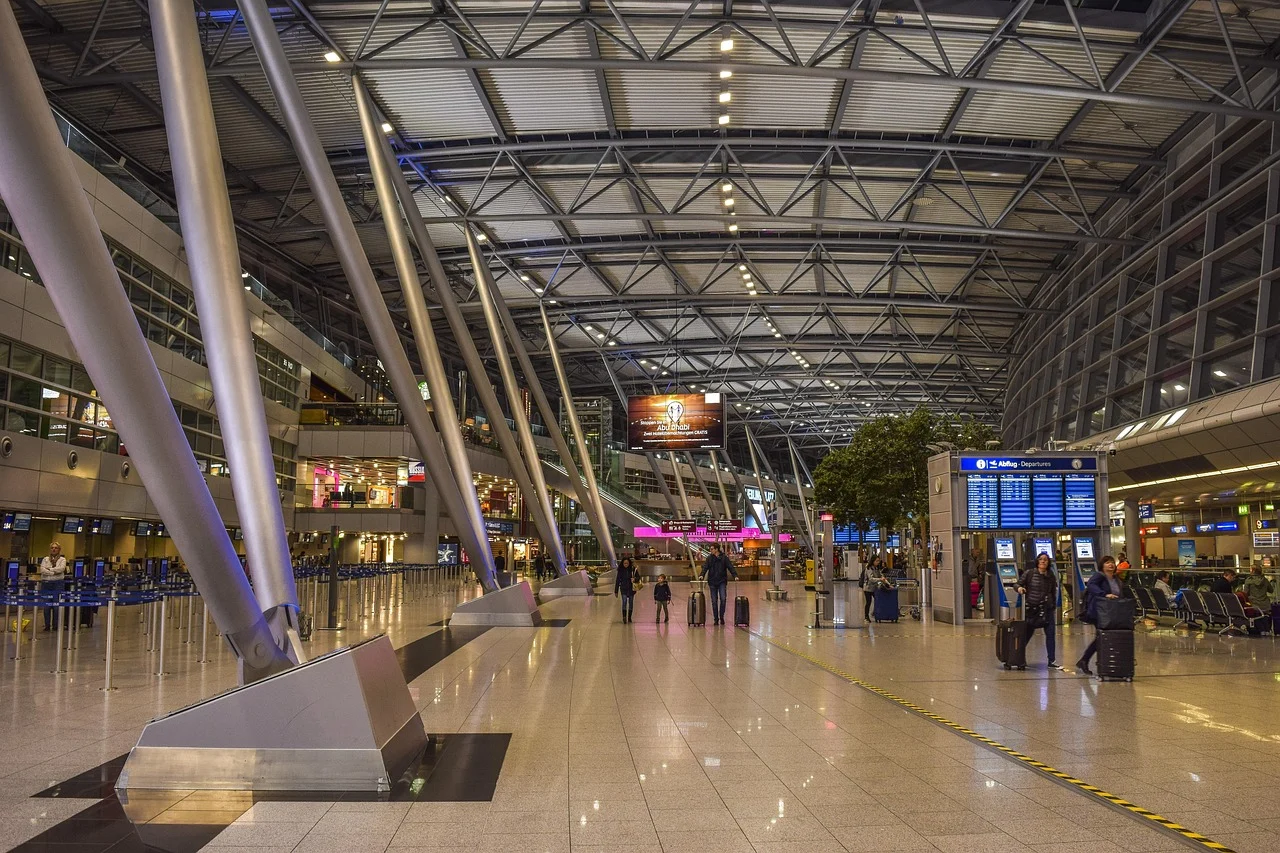 Photo: Pixabay
Photo: PixabayThe redesigned terminal of Roland Garros Airport is as unique as its landscape. Made with 70% of recycled steel, 830 adjustable louvers that automatically adjust to ever-changing climatic conditions, sustainability is at the core of the airport architecture.
Inspired by Reunios Island’s lush green ravines and canyon-like structure, the entire airport acts as a natural ventilation system. The interiors greet travelers with native plants and warm-toned wood that bring the tropical surroundings alive.
The airport offers an experience beyond customs and into the easing of the island’s most rhythmic moment of arrival.
4. Kansai International Airport Terminal 1, Japan
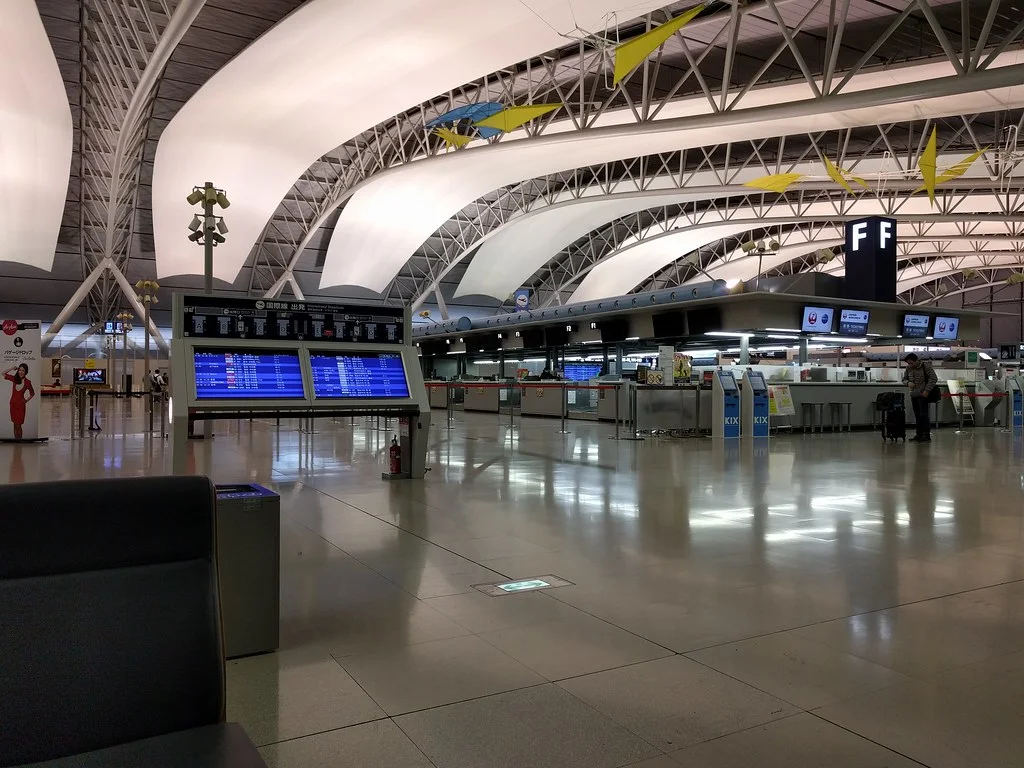 Photo: Flickr
Photo: FlickrBuilt on an artificial island of Osaka Bay, Kansai International Airport Terminal 1 has long been admired for its engineering marvel.
Designed by the infamous architect Renzo Piano, the terminal’s new design intricately preserves the illustrious legacy, while adding layers of innovation and elegance. The new interior expansions are designed using a range of natural materials to give them a distinctive Japanese look.
The foreign lounges and retail areas are now 60% bigger in size, accommodating 13 stores, a street food court, and upscale coffee shops. The passengers can savor Japanese comfort cuisine, including ramen, udon, and sushi.
Moreover, the terminal is equipped with improved smart security lanes powered by real-time data with the capacity to carry 6,000 people per hour. This added an essential upgrade before the World Expo 2025 event in Osaka.
5. International Airport Main Terminal, Portland
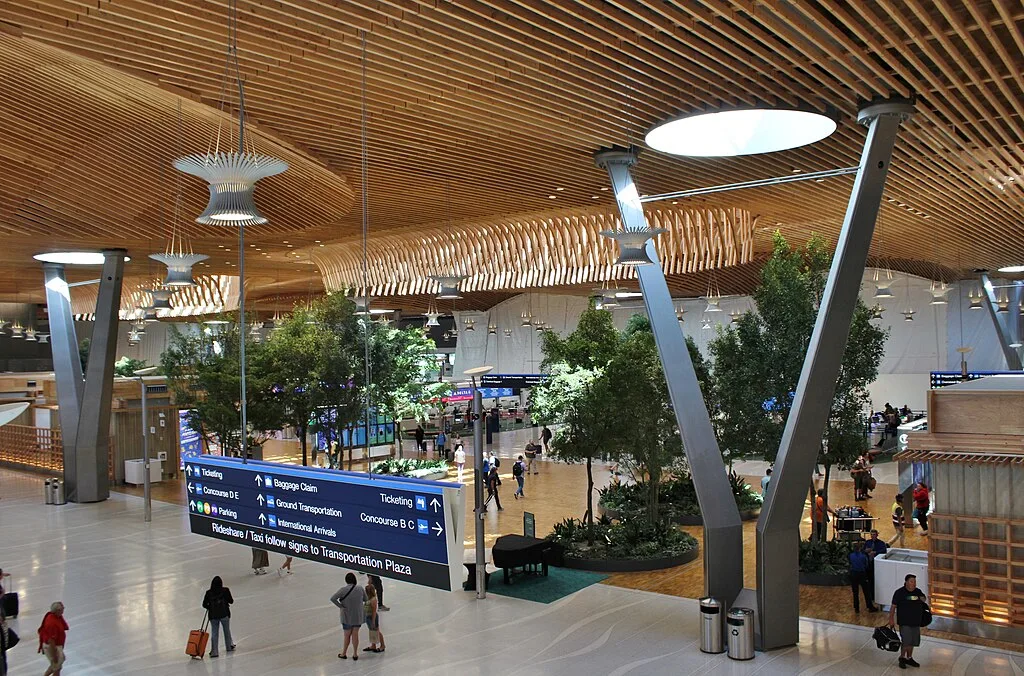 Photo: Sounder Bruce / Openverse
Photo: Sounder Bruce / OpenverseThe ZGF-designed Portland Airport Main Terminal took inspiration for its redesign from a walk in a forest. The entire terminal gives the aesthetics of a living, breathing forest, perched under a massive wave-shaped roof crafted from the locally sourced timber.
This innovative green building design incorporates over 70 fully-grown trees and 5,000 plants, promoting a lush and calm oasis for passengers amid the bustling travel scenarios.
The inspiration behind the terminal’s design is based on the idea of biophilia, entertaining 60% of the main walkways filled with sunlight and lush green throughout the terminal.
Inside the concessions hall, from donuts and seafood chowder to Powell’s Books outpost, passengers can hop to the terminal’s dining options, showcasing Oregon culture.
The terminal even attached a micro-cinema offering short films directed by local creators, turning layover and flight delays into immersive experiences.
6. International Airport Main Terminal 1, San Francisco
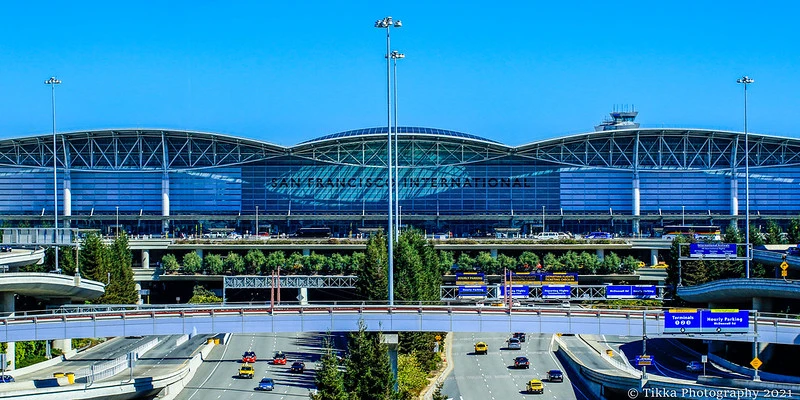 Photo: John Tikka / Flickr
Photo: John Tikka / FlickrSan Francisco’s Main Airport Terminal sets the high standard in sustainable airport design. Every inch of the terminal is engineered keeping environmental efficiency in mind.
During the redesign, the construction itself reduced 79% carbon emissions to systems that diminish energy use by nearly 60% and divert over 90% of waste from landfills.
The building is an exemplary model for green infrastructure fitted with a solar panel-fitted roof, a low-carbon baggage handling system, and fritted glass for glare control.
The Gensler and Kuth Ranieri architectural teams innovated a dual plumbing system. This enables potable and non-potable water waste diversion toward flushing fixtures and landscapes.
The airport hasn’t compromised any aesthetic aspect in the comfort of the passengers, despite all the carbon reductions. The public art installations, open gallery spaces, and the world’s only completely accredited airport museum turn the building into San Francisco’s creative identity.
7. Marrakesh Menara Airport, Morocco
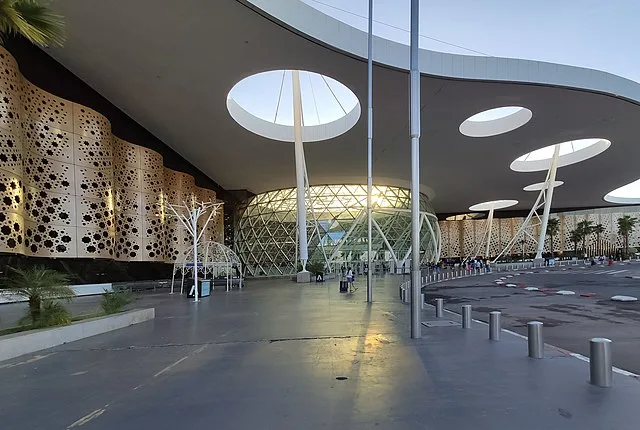 Photo: Reda Kurbush / Wikimedia
Photo: Reda Kurbush / WikimediaSecured a seventh place in Conde Nast Traveler’s Readers’ Choice Awards 2021, Morocco’s Marrakesh Menara Airport continues to be the world’s most beautiful architectural airport in 2025.
The airport itself is an engineering marvel immersed in Moroccan-style landscape and heritage.
Inspired by traditional Islamic geometric art, its most striking feature is the honeycomb-patterned facade, which filters sunlight throughout the space in delicate patterns.
The sleek steel and soft stone textures blend the contemporary appeal with historical aspects, while the broader glass walls give a comprehensive glimpse into the outside world. Adorned with arabesque motifs and subtle desert hues, the interior spaces resonate with medina and the surrounding landscapes of Morocco.
In terms of facilities and amenities, high-speed Wi-Fi, business centers equipped with printers, computers, and charging stations won’t leave passengers stranded during layovers.
The terminal’s design, balanced with functionality and Eco-friendliness, offers passengers a window into Morocco’s cultural richness and architectural sophistication.
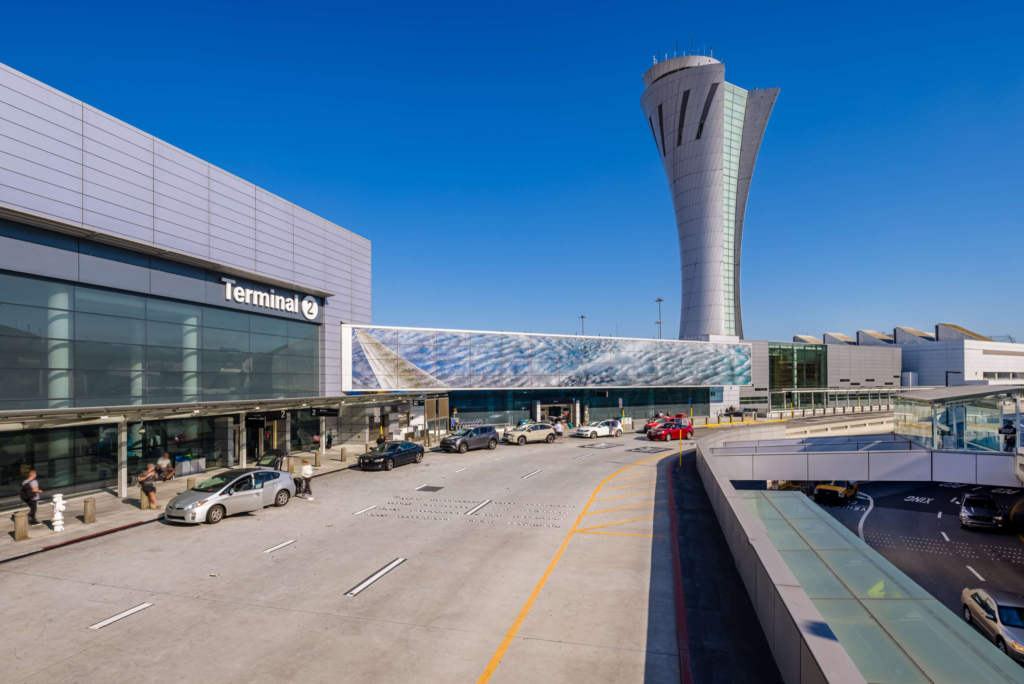 Photo: San Francisco
Photo: San FranciscoBest Architectural Airports FAQs
It’s an international architecture prize, presented by UNESCO and the International Union of Architects, that recognizes outstanding design in categories like airports, hotels, and cultural buildings.
Yantai Penglai International Airport Terminal 2 in China topped the list for its coastal-inspired design, natural lighting, and architectural innovation.
They combine striking architecture with cultural storytelling, sustainable building practices, and passenger-friendly spaces—turning a functional stop into an experience.
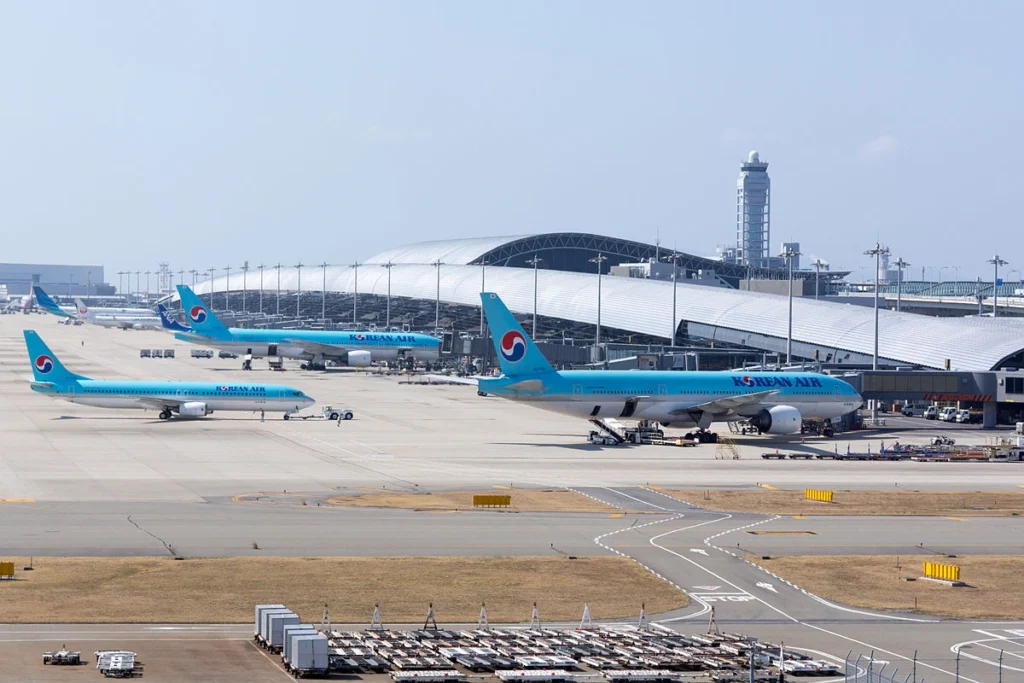 Photo- lasta29; Wikimedia Commons
Photo- lasta29; Wikimedia CommonsBottom Line
The 2025 Prix Versailles awards, presented by UNESCO and the International Union of Architects, spotlight seven airports celebrated for exceptional architecture, sustainability, and passenger experience.
- Yantai Penglai International Airport T2, China – Coastal- and mountain-inspired rooflines, skylights, and a central glazed dome bring natural light and local character.
- Marseille Provence Airport T1, France – Maritime-inspired design with timber canopies, recycled metal, and a vast connecting hall between old and new sections.
- Roland Garros Airport, Réunion – Built with 70% recycled steel, climate-responsive louvers, native plants, and natural ventilation reflecting the island’s ravines.
- Kansai International Airport T1, Japan – A Renzo Piano original, now expanded with Japanese materials, larger lounges, smart security, and new dining ahead of Expo 2025.
- Portland International Airport Main Terminal, USA – Timber wave roof, indoor trees, biophilic design, local food, bookstore, and micro-cinema create a “forest walk” feel.
- San Francisco International Airport Main Terminal 1, USA – Carbon-cutting design with solar panels, dual plumbing, extensive art, and a full airport museum.
- Marrakesh Menara Airport, Morocco – Islamic geometric facade, desert-toned interiors, glass walls, and modern amenities blended with Moroccan heritage.
The world’s most beautiful airports in 2025 aren’t just transit hubs—they’re architectural statements that blend local culture, sustainability, and passenger comfort into destinations in their own right.
Stay tuned with us. Further, follow us on social media for the latest updates.
Join us on Telegram Group for the Latest Aviation Updates. Subsequently, follow us on Google News
Top 10 Cleanest Airports in the World in 2025
The post Top 7 Most Beautiful International Architectural Airports in the World in 2025 appeared first on Aviation A2Z.


















